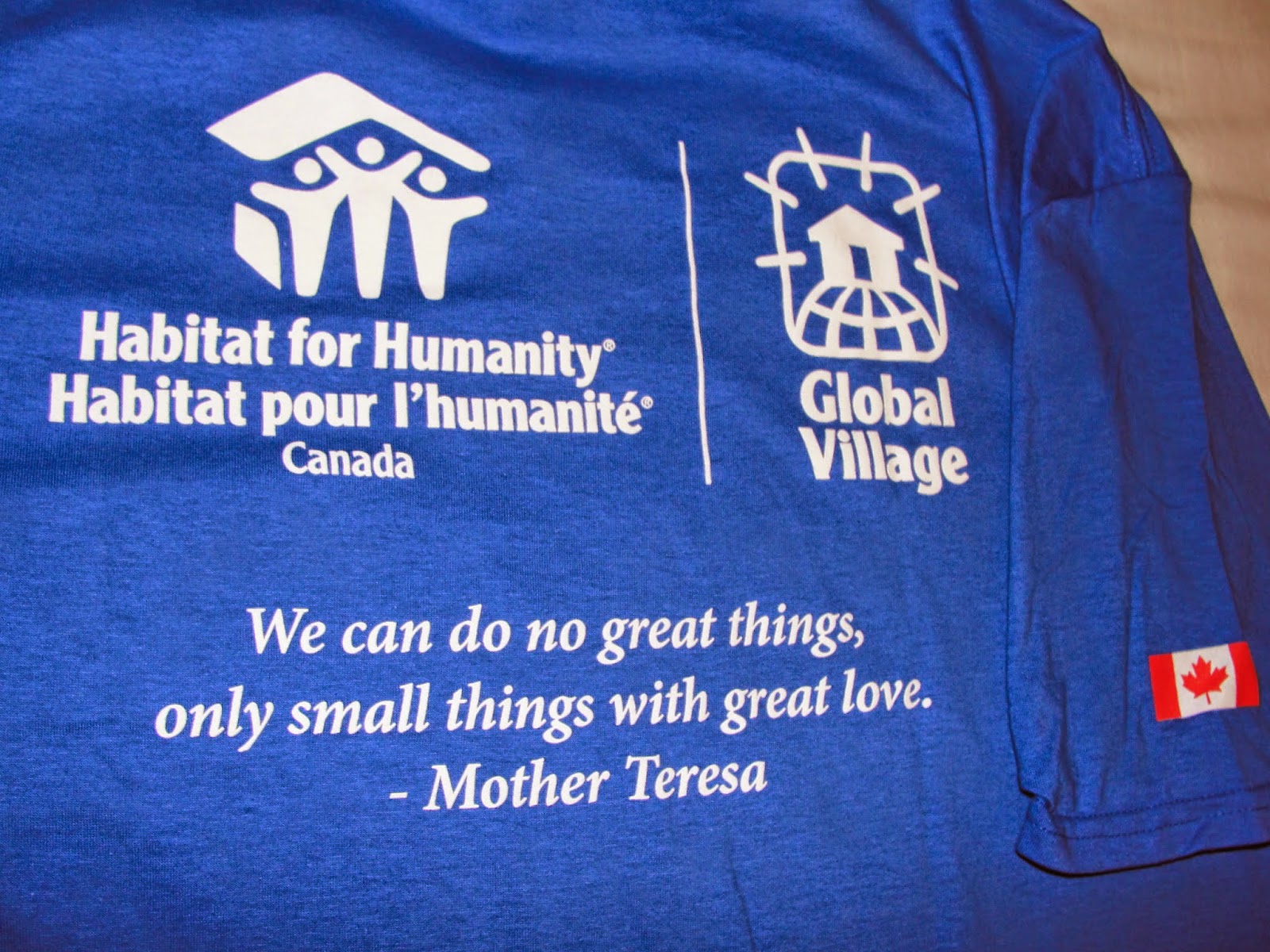Fortunately, we found a new build with a great Global Village team in Cambodia that fit our travel schedule perfectly. After many weeks of planning (while sightseeing around Thailand - coup schmoup!), we're excited to announce that our Global Village build starts on Monday!
our t-shirts are in!
time to brush up on our Canadian...
Now it's time to share a little more about HFH Cambodia and - most importantly - the families we'll be helping in the coming week.
About HFH Cambodia...
HFH Cambodia's basic principals are essentially the same as other affiliates worldwide - decent, affordable housing as a foundation to break the poverty cycle; dignity for all through a commitment to housing as a basic human right; and positive and lasting social, economic, and spiritual change within communities as a success measure.
Of the four SE Asia countries we've visited, the last principal of positive and lasting social, economic, and spiritual change applies most prominently to Cambodia. While the country continues to slowly recover from Pol Pot's horrific regime in the 1970s, the impacts of the Khmer Rouge are still evident. In 2004 a third of Cambodia's 15 million citizens lived under the national poverty line, surviving on less than $1.25/day. Harsh times continued later in the decade. "The 2008 food crisis, and the economic crisis of 2009, severely affected the population, especially children, and led to a rural exodus."*
As is true everywhere, rural families moving to the city usually don't have specific skills and/or education, and therefore have a hard time securing regular income. This is especially true here. The "rural exodus" several years ago had "severe consequences for vulnerable poverty line families - they relocated to unserviced remote areas, became scavengers living in rental shacks at high risk of eviction, many were infected or affected by HIV/AIDS, enduring these and a great many other perils - predominantly in the capital city of Phnom Penh." Then, in 2009, Phnom Penh closed the Steung Meanchey dumpsite which forced families that depended on scavenging there to move to even worse living conditions.
As is also true everywhere, stable and safe living conditions promote good health for the family and increase likelihood that children will attend school and be successful. "Since 2004, HFH Cambodia has built over 2000 houses and served over 9000 families through housing, community development, and water, sanitation and hygiene projects in Phnom Penh, Siem Reap, Kandal, Takeo, Prey Veng and Battambang." (As you can see, housing is just one aspect of HFH Cambodia's mission - we'll be sharing information about these other projects over the next week.)
Meet the families (shared with permission from HFH Cambodia)...
We will be building under the affiliate's New Start and New Life Project, which aims to improve the quality of life for orphans/vulnerable children and people living with HIV/AIDS. We'll be helping two families during our short week:
- Som Sam Oul (45 years old) and her husband, Touch Chan Thou (age 50), live with two of their four children (Pheng Kea, age 21 and Pheng Toun, age 19). Both she and her husband have tested positive for HIV. Her husband is no longer able to work so Som Sam Oul works long hours at the water company to support the family. Som Sam Oul is so happy that Habitat will enable her children to have a home for many years. "Having a house it means having a new life and a new place for my family."
- Nov Thary (34 years old), a single mom living with her two sons, Mon Samuth (age 7) and Mon Makara (age 3). The family currently lives in a house that leaks and floods, especially during the monsoon season, making it difficult to sleep. The family has to constantly move between friends' houses in order to stay dry. Thary can't afford her current rent and utilities and gets little support from her ex-husband. She's so excited about the opportunity Habitat brings to their family: "HOME is a decent shelter and a big dream for my family..."
So what does a family get for their investment? "A HFH Cambodia house is usually 31.5m2 (339f2). Traditionally, houses have been built using fired bricks or wood, but HFH Cambodia is experimenting with stabilized soil brick technology to offer our home partners a more economical, environmentally friendly housing solution. The standard house design includes a living room, a bedroom and a kitchen with a toilet." (Remember that a "bathroom" is a "toilet" everywhere else in the world!)
In addition to these building methods, HFH Cambodia is trying a new wooden house design and our team gets to help test it out! Here's a sneak peek:
Habitat Cambodia wood house model
More to come...
We'll be posting more about our experience here and on our Facebook page so check back often... And please note that "HFH Cambodia strategically plans to serve 125,000 families by 2018." A pretty tall order - if you'd like to help, you can donate here.
Speaking of donating, HUGE thanks to all who donated to our original Bangkok build! And thanks to everyone who supports us in this endeavor through your emails, comments, "likes" and good thoughts. We appreciate it more than you know. So does Habitat!
*Anything in quotes is taken directly from our volunteer manual.


what are those, 8" x 8" cedar posts? yeah, that should hold.
ReplyDeleteIt held 25 of us just fine when we had the dedication party...
Delete